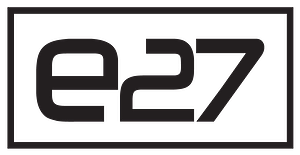The End of Company Culture: AI Makes Every Decision
As AI takes over decision-making across enterprises, traditional company culture risks being replaced by machine-optimized logic, raising urgent questions about identity, trust, and the human role in shaping organizational values.
When the Algorithm Becomes the Boss
Company culture has long been the intangible heartbeat of an organization—a shared set of beliefs, behaviors, and rituals shaped by leadership, history, and human connection. But in the age of autonomous AI, the foundation of that culture is shifting. AI is no longer just an advisory tool for decision-makers; it is increasingly becoming the decision-maker. From strategic investments to hiring and performance evaluations, the authority that once belonged to human leaders is being delegated to algorithms.
This shift raises a provocative question: if an algorithm makes every decision, what happens to company culture as we know it?
The Shift from Human-Centric to Machine-Centric Decision Making
For decades, organizations have been shaped by human-centric decision-making—leadership personalities, boardroom debates, and collective experiences that formed a company’s ethos. Today, AI systems are not just supporting these processes; in some cases, they are replacing them entirely.
Enterprises are deploying agentic AI capable of evaluating market opportunities, running multi-scenario forecasts, and recommending operational changes without human initiation. In recruitment, AI models can screen applicants, assess skill alignment, and determine final hiring decisions. In customer engagement, generative AI agents negotiate contracts, personalize offerings, and even close deals.
When these systems operate autonomously, the influence of leadership styles and team values is replaced by data-driven optimization—efficiency, accuracy, and ROI become the new cultural compass.
What Happens When Culture is Coded
Traditional company culture thrives on human moments—improvised problem-solving, shared milestones, and leadership stories that become part of the collective memory. AI-driven organizations, however, translate these values into code. Decision rules, optimization functions, and training datasets become the “cultural DNA.”
The risk is cultural homogenization. AI models, trained on global datasets, may unintentionally standardize decision-making across industries and geographies, erasing the unique identities of individual companies. What was once a tech company’s “scrappy startup” spirit or a consultancy’s “relationship-first” ethos becomes a uniform output of algorithmic reasoning.
In this world, culture becomes less about the people in the building and more about the parameters inside the machine.
The Disappearance of Managerial Discretion
In many enterprises, managerial discretion is the bridge between corporate policy and human experience. Leaders interpret guidelines, consider context, and make calls that reflect both business logic and personal judgment.
AI challenges that role. In performance management, predictive analytics can determine promotions based on productivity data, learning velocity, and project outcomes. Compensation adjustments can be calculated by real-time performance metrics. Even restructuring decisions can be driven by profitability models without a single management meeting.
While this removes human bias, it also eliminates mentorship moments, leadership instincts, and the subtle decisions that nurture talent and loyalty.
Benefits of AI-Defined Culture
An AI-driven organizational culture offers clear advantages. Decisions can be consistent, data-backed, and immune to many forms of personal bias. Operational changes can be rolled out faster, with fewer disputes. Promotions and rewards can be based solely on measurable contributions rather than politics or favoritism.
For global enterprises, AI enables cultural consistency across offices. Whether in Jakarta or New York, the AI can apply the same decision logic, ensuring fairness and operational alignment.
The Dark Side: When Culture Becomes a Black Box
The opacity of AI decision-making presents a significant challenge. If employees cannot understand how or why decisions are made, trust erodes quickly. This cultural alienation is amplified when long-standing rituals—town halls, leadership updates, informal team discussions—are replaced by AI outputs and dashboards.
There is also the risk of “culture drift,” where AI systems, continuously learning from external datasets, begin to evolve decision patterns that no longer align with the company’s original values. Without human oversight, this drift can go unnoticed until it is deeply embedded.
Hybrid Culture: Humans in the Loop
Forward-looking enterprises are not choosing between AI or humans—they are blending the two. The most successful models keep AI in the decision chain but require human sign-off for key cultural and strategic calls.
One approach is embedding “algorithmic ethics” into enterprise AI systems. This involves defining cultural guardrails—principles the AI must respect when making recommendations—and continuously auditing decisions against those standards.
Another is designing AI-human collaboration workflows where AI handles the analytics and scenario testing, while leaders interpret those outputs in the context of company vision and employee experience.
The Future: Culture as an API
In the next decade, culture may become programmable. Enterprises could design modular cultural frameworks—defining values, tone, and behavioral norms—and deploy them through AI governance layers.
A global retailer, for example, might use a “high-collaboration” culture API in its design teams while running a “high-efficiency” culture API in its logistics operations. AI could adjust these cultural profiles in real time based on local needs, regulatory environments, or competitive pressure.
This also opens the possibility of employees selecting their preferred cultural alignment, much like choosing benefits packages. An engineer could opt into working within an “innovation-first” AI decision framework, while another might prefer a “stability-first” one—regardless of which company employs them.
Conclusion: The Choice Ahead for Enterprises
The rise of AI as the ultimate decision-maker forces a fundamental choice. Enterprises can allow culture to be replaced by machine logic, preserve it as a human-led domain, or redefine it as a hybrid system.
The outcome will shape not just organizational performance but also the identity of work itself. In the end, employees may no longer follow the leader—they may follow the algorithm. The question is whether that algorithm will truly represent the values the company set out to protect.



